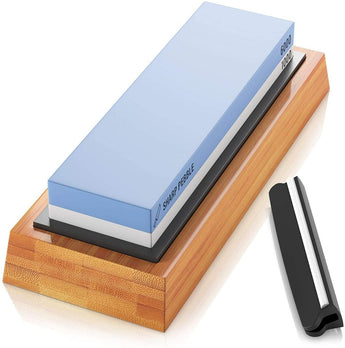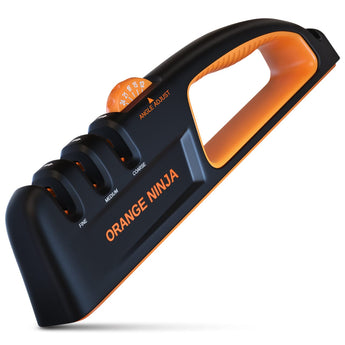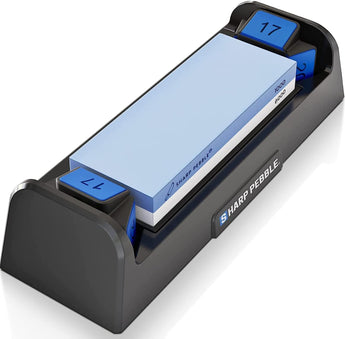
Just as we enjoy taking a shiny new car out for a spin, slicing through with a brand new chef’s knife is an equally nice feeling. Feels like butter; doesn’t it?
Let’s face it; maintenance is not exactly an activity that most of us look forward to. Just like a kid runs away from tidying his room after playing all afternoon, we tend to avoid sharpening our blades when the time comes.
We have said it before and we’ll say it again; just taking out a few minutes every now and then will quite literally double the life of your knives and save you a lot of cash and headache. Within this 2-part series, we intend to discuss a few hacks that some of the world’s most revered bladesmiths employ to keep their blades samurai sharp.
Read through and we promise you won’t frown at the thought of sharpening your knives anymore!
- Cut through paper to see when you need to sharpen:
It’s a given that you shouldn’t wait for your knife to completely go blunt before sharpening. Experts agree that you should roughly sharpen your knives thrice a year or every 4 months or so. But what if you’re not sure if it is indeed the time to sharpen your blades? It’s recommended that cutting through paper will help you gauge quite accurately whether it’s time to sharpen. Here’s how to do it:
Hold a piece of paper by its edge with your non-dominant hand. Now position your knife at the top of the piece of paper and press it directly down with your working hand. Look for these sharpness indicators:
- A clean cut and minimum sound mean the knife’s perfectly honed and sharpened.
- A slight tearing noise while paper cutting indicates it needs a bit of honing.
- If the knife doesn’t cut the paper by simply pressing down, cut the paper back and forth in a sawing motion.
- If it cuts, the knife is sharp but proper honing is required.
- If it fails, then a thorough sharpening and honing session is in order.
- If you’re a rookie sharpener, then start with a pairing knife
Just like any other skill, learning to sharpen your knife has a certain learning curve and it requires your complete attention and a bit of finesse to properly sharpen a knife. If you have just forayed into knife sharpening, it’s highly advised that you ease yourself into it by first perfecting your technique on plastic paring knives instead of jumping to expensive chef’s knives.
Because of their small size and light weight, paring knives are a lot easier to handle than heavier than a typical chef’s knife is.
Also, if you’re novice sharpener, it’s best to avoid using knives that have bolsters (the rounded metal bit at the blade’s base that joins it with the handle. Bolsters can catch on the whetstone while sharpening, potentially putting you in harm’s way.
- A Whetstone Is The Safest Way To Sharpen Your Knife
Even an experienced knife sharpener can damage a knife’s ability to cut properly if there’s negligence. That said, it shouldn’t stop you from learning how to sharpen your knife because it’s not quite as intimidating as it may sound.
Although there are several ways to sharpen a knife but using a whetstone is probably the safest. It’s almost impossible to hurt your blade even if you’re a rookie. The only real concern is visual damage if you use too flat of an angle and end up scratching the blade’s side.
We’d love to hear from you! Drop us a PM on our Facebook or Instagram.



